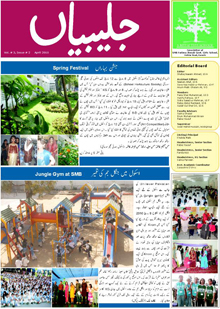In addition to renovating the existing structures, and providing for clean drinking water, improving the toilets and sports facilities, the following new facilities were constructed:
* This large school, today with 2,100 students, was established by the Sindh Madressah Board (SMB) in the early 1950s by Hasanali Effendi, a prominent educationist of Sindh. During the Bhutto era (1972-77) the school was nationalized and renamed SMB Fatima Jinnah Government Girls School.
Senior Faculty Coordinator: Rafia Khan
Among the many programmes that were introduced at the SMB, two need special mention: one was the phonics programme and the other, the teachers’ training programme. Both these programmes were headed by Rafia Khan. She trained existing teachers how to use phonics as a methodology for teaching the English language.
A special state-of-the-art facility was constructed for these two programmes, where under-training teachers first observed the teachers using the phonics method, and then taught to young childern in the school.
Within a short period of one year, Rafia Khan had trained teachers in phonics. In the training programme, 25 students from the graduating class (Class 10) were selected, given a small stipend and received training in phonics. They were given certificates at the end of the training period, and got jobs in different schools immediately.
Learning Modules were made an integral part of the Programme of Studies at the SMB. The following modules were offered in different classes:
Administrative changes made at the outset of the initiative at the SMB included:

Fill in the form and submit
© 2023 BookGroup All Rights Reserved. | Web Design by UMW Media